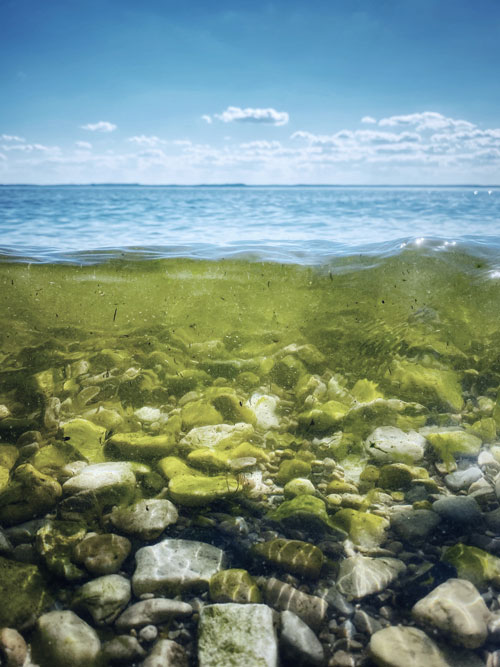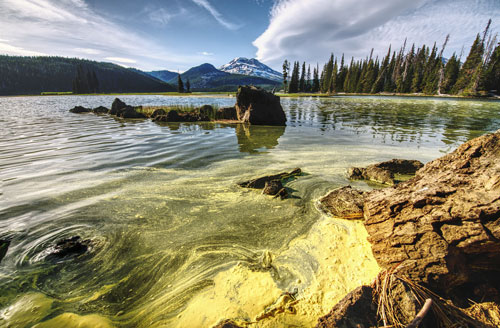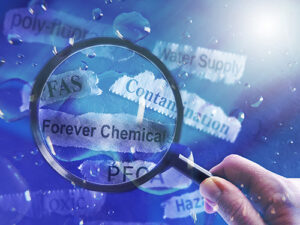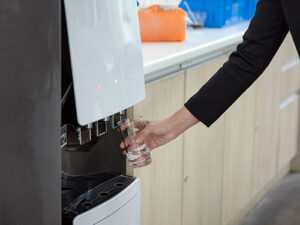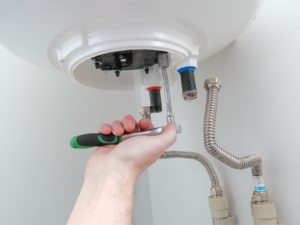Harmful algae invading local lakes in Maryland can pose several health threats to animals and people if consumed. This contaminated water can find its way into your drinking water, which is why Hague Quality Water of Maryland offers effective water treatment solutions to help you protect yourself and your family. Let’s take a look at what harmful algae is and how it can negatively impact your drinking water.
What are Harmful Algal Blooms?
Harmful algal blooms, also known as HABs, occur when algae populations grow without restraint and produce toxins that negatively impact not only various marine species, but also people. These harmful blooms have increasingly become a threat to every state along the coast and those states surrounding the Great Lakes.
HABs can include various types of algae, such as Anabaena flos-aquae, Microcystis aeruginosa, and Cylindrospermopsin. While some species take in all the oxygen in the water as they decay, others can discolor water, contaminate beaches, or contaminate drinking water.
Algal blooms can last as long as several months, as algae thrive in warm, shallow, nutrient-rich water. Cylindrospermopsin in particular can appear in freshwater lakes, and it produces toxins continually. The World Health Organization set consumption toxicity levels for this species in 1998 after recognizing its harmful effects.
When harmful toxins from HABs infiltrate drinking water, people can experience a range of diseases and symptoms called cyanobacteria. If you think your water may be compromised by harmful toxins, it is important you speak to a water specialist right away.
Toxic Algae Hot Spots in Maryland
In Fall 2019, Lake Frank and Lake Needwood in Montgomery County Maryland, and Lake Anna in Virginia experienced a toxic Bluegreen algae invasion. The algae species was the more common Microcystin which creates cyanobacteria.
Locals grew concerned as dogs frequently swim and/or drink from the lake regardless of park regulations. At Lake Anna, swimming advisories were posted after the Virginia Department of Health detected high levels of the toxic algae present in the lake.
Unfortunately, other lakes in the Maryland region had recently documented the presence of Bluegreen algae including:
- The North East River in Cecil County
- Williston Lake in Caroline County
- Sassafrass River in Kent County
It is important to remember HABs can appear to look like foam or scum sitting on top of the water, or like green paint that makes the water look a greenish color. If you see any of these signs, the MDE advises taking the following precautions:
- Do not swim in areas that appear affected by toxic algae.
- Do not drink or cook with the water.
- If you must come into contact with the water, immediately wash off with clean water.
- If you experience any discomfort or skin irritation, seek medical attention.
- Keep pets and livestock away from the water.
- Contact your vet immediately if your pet comes into contact with the water.
The Chesapeake Bay
In Maryland, Microcystis is the most common toxic algae found in freshwater, especially in the freshwater portions of the tributaries to the Chesapeake Bay. This type of algae is part of the Cyanobacteria, or Bluegreen Algae family and can cause skin irritation, liver problems, and more.
Other known HABs in the state of Maryland include:
- Dinophysis spp: Causes Diarrhetic Shellfish Posioning
- Pseudo-nitzschia: Produces domoic acid, which if consumed by shellfish, can cause Amnesic Shellfish Poisoning in people or animals who eat the shellfish
As a precaution, the Maryland Department of the Environment (MDE) uses Enzyme Linked Immuno Sorbent Assay equipment (ELISA) to establish any possible threats that may be possible due to HABs found in Maryland waters. This monitoring is also conducted at Maryland beaches where the MDE works with the Maryland Department of Health, Maryland Department of Natural Resources, and local health departments to ensure public knowledge of potential HAB presence. Monitoring continues until there is no longer a visible threat or the toxicity level is well below action levels.
While Maryland officials work diligently to ensure drinking water is not impacted by harmful algae, it is important to know what may be in your water. Toxins can find their way into your water long after the water has left the water treatment plant. For more information on the quality of your water, the water treatment specialists at Hague are here to help.
Know Your Water Quality
To protect yourself from harmful toxins, let us conduct a water treatment review and test for your water supply. Hague Quality Water of Maryland offers a free water test when you contact us about your water system. We can help you get the clean water you deserve with our Hague WaterMax® BEQ system. This system is specially made for city water and is a multi-stage water treatment system effective in removing harmful contaminants from your water.
The WaterMax® system works best when paired with Reverse Osmosis. It frees your water of chlorine taste and reduces dirt and sediment. Find out how filtered water can protect your health when you call (410) 757-2992 today for a free water analysis.
NOTE: Free water tests are for new customers to determine water quality and treatment solutions.


